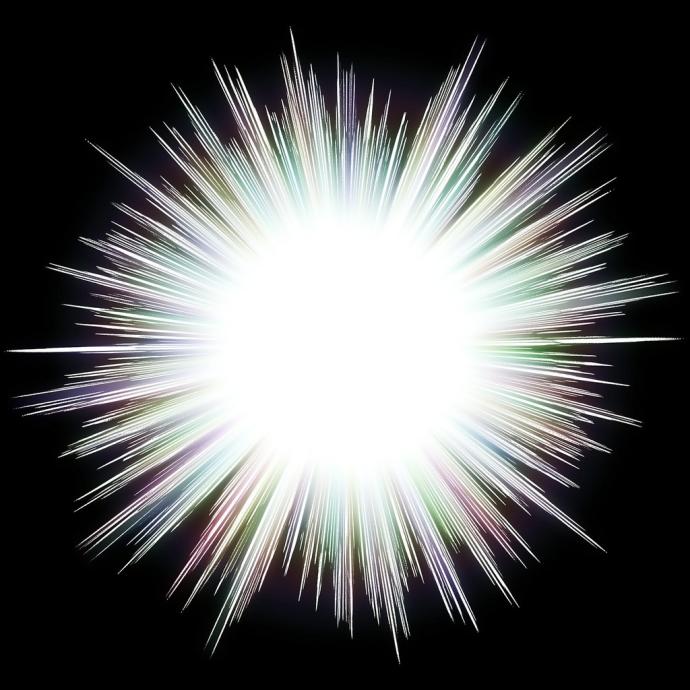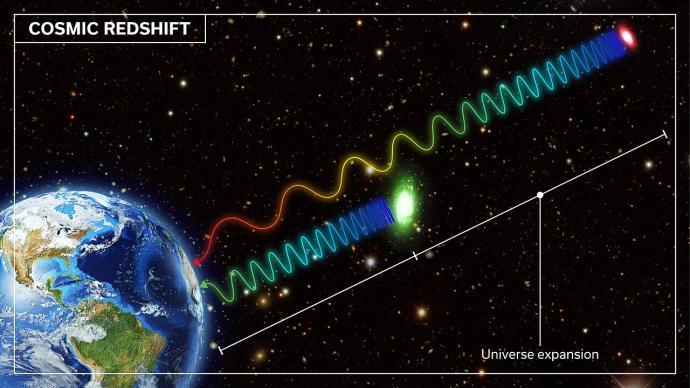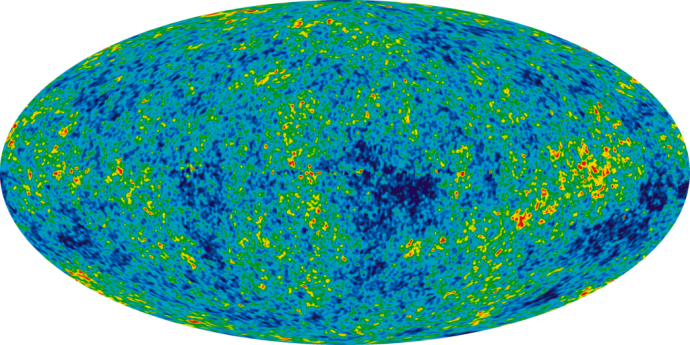The Big Bang is the explanation for how the Universe started.
Astronomers think that everything started in a single point. Then everything expanded and stretched to grow into the huge Universe we see today.
But why do we think this?
To understand which theories fit, scientists work to a method. They look at what they can see and describe it using maths. They can then use this to predict what they should be able to see in the real Universe and create models for how things behave. The next step is to test how well the models work by observing the Universe using telescopes. If the models match up to what we see, we know it is a good description. If not, scientists keep testing and testing until they come up with something better!
The Big Bang Theory has worked for all of the tests we've used - so it's still the favoured theory!

- Evidence for the Big Bang
1. Redshift of Galaxies
The light we see from galaxies has been stretched by the time it reaches us. This means that light, which may have left a bright young star as blue, looks redder than it should by the time it reaches us. We call this effect redshift, which results from galaxies moving away from us.
Image CreditThis work by DES Collaboration is licensed under Creative Commons Attribution 4.0 International
CreditThis work by DES Collaboration is licensed under Creative Commons Attribution 4.0 InternationalTwo galaxies at different distance to Earth. By the time light reaches us from the furthest galaxy, the light wave has been stretched, making the galaxy appear red. Observations show that pretty much everything in the Universe is moving apart. The redshift of distant galaxies tells us the Universe is expanding.
If you could wind time backwards, you would see galaxies getting closer together. If you could go back far enough, everything in the Universe would have been in one place.
2. Cosmic Microwave Background
A long, long time ago, the whole Universe was very hot. As it grew in the size, the heat left a "glow" that filled the entire Universe. The Big Bang theory predicts this glow should still exist. It also predicts that we should be able to detect this glow as microwave light.
Scientist have found this Cosmic Microwave Background and accurately measured it using orbiting telescopes. This is very good evidence that the Big Bang theory is correct.
Image CreditThis work by NASA/WMAP Science Team is licensed under Creative Commons Zero v1.0 Universal
CreditThis work by NASA/WMAP Science Team is licensed under Creative Commons Zero v1.0 UniversalA map of cosmic background radiation from when the universe was around 380,000 years old. The colours are artificial and show tiny temperature variations that resulted in the galaxies we see today. 3. Mixture of Elements
Some chemical elements, like hydrogen and helium, were created soon after the Big Bang. The Big Bang theory predicts how much of each element was made in the early Universe. When astronomers look at very old galaxies and stars, the amount of each chemical they see agrees with the Big Bang theory.
You cannot look for this evidence in new stars, like the Sun. This is because newer stars contain chemical elements that were once made by older stars. So, the chemical make-up of new stars is very different from that of stars which existed soon after the Big Bang.
4. Looking back in time
There is an alternative to the Big Bang theory. It is called the Steady State Theory. In this theory, the Universe does not change much over time.
Remember - light takes a long time to travel across the Universe. So, by looking at galaxies that are very far away, we are also looking back in time and can test this theory.
We can see that very old galaxies are different from newer galaxies, which shows the Universe has changed. This evidence fits better with the Big Bang Theory than the Steady State Theory.
- Where did the Big Bang take place?
If the Universe is expanding, where is it expanding from, where did it all begin? These are very good questions, but the answer might seem confusing. The answer is...everywhere!
To understand this, imagine that the Universe is the surface of a balloon; the galaxies are little dots on the surface of the balloon.
As you blow up the balloon, the dots get further apart, and the surface stretches and expands. Choose a dot and watch the dots around it. Then, choose another and do the same. It doesn't matter where you observe on the balloon; it will always look about the same.
This is like the Universe. The galaxies move apart as it expands. It doesn't matter which galaxy you are in, the galaxies around you move further away over time.
However, remember the surface of the balloon only has 2 dimensions. This means the centre of the "ballooniverse" is not part of it - it is outside it in another dimension!
Although our Universe has 3 dimensions, its "centre" is similarly meaningless. You would need to be able to "see" in more than 3 dimensions to be able to find it!
Do not worry if this is a bit confusing. We only think in 3 dimensions, and it is almost impossible for us to imagine more complicated things!
